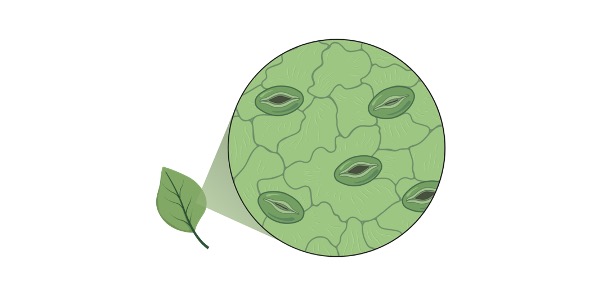Table of Contents
Apoenzyme Definition
The protein component of an enzyme is known as apoenzyme. A holoenzyme is made up of the non-protein portion cofactor and the protein part apoenzyme. Apoenzymes are crucial for enzymatic activity since they’re liable for enzyme substrate selectivity. Apoenzymes are not active enzymes unless they bind to a cofactor, which might be organic or inorganic.
What is Apoenzyme?
Enzymes are biological catalysts that help living organisms speed up chemical processes. Enzymes can only function in certain pH, pressure, and temperature conditions. For each chemical process in the body, they are very specific and effective.
Enzymes work by altering substrates to create a new product. They also reduce the activation energy necessary to start the reaction, resulting in a faster response. Enzymes do not alter during chemical reactions and may thus be utilised several times.
Simple enzymes like trypsin, pepsin, and urease do not require cofactors. However, other enzymes do require tiny non-protein molecules called cofactors, and these enzymes are referred to as conjugate enzymes.
A prosthetic group or coenzymes can be used as cofactors. Because coenzymes are loosely linked to the apoenzyme, they can be easily removed from an enzyme’s active region.
Cofactors include water-soluble vitamins or coenzymes like vitamin C and vitamin B, as well as minerals and elements including calcium, magnesium, iron, copper, zinc, and potassium. The apoenzyme is generally loosely linked with prosthetic groups.
Cofactors aid in the completion of processes that are not possible with conventional enzymes. Small organic molecules like flavin or inorganic metal ions can function as cofactors. Apoenzyme refers to the enzyme’s protein component.
After attaching to a cofactor, an apoenzyme transforms into a holoenzyme, which is an active enzyme capable of catalysis. The majority of cofactors are firmly linked to a coenzyme, but not via a covalent connection.
Some synthetic organic groups, such as vitamins or iron, may, nevertheless, be covalently bonded. Because the coenzyme and substrate must attach to the apoenzyme before the reaction can begin, the reaction is termed a reaction of two substrates with the apoenzyme when the coenzyme is not securely linked to the apoenzyme.
In lactate dehydrogenase, for example, the coenzyme NADH and the pyruvate substrate need be added to the apoenzyme in order for it to fulfil its catalytic activity. Because coenzymes cannot be produced by the body, they must be consumed through food.
Vitamins and minerals are therefore physiologically essential since they engage in a variety of enzymatic activities.
Apoenzyme: A full enzyme is formed when a protein component is coupled to a cofactor.
Simple Enzymes vs Conjugate Enzymes
Some enzymes require cofactors (non-protein molecules) to catalyse reactions, whilst others do not. Simple enzymes are those that do not require the use of cofactors. Conjugate enzymes are those that need a specific cofactor to function. Conjugate enzymes are made up of two parts: (1) cofactor, which is a non-protein component, and (2) apoenzyme, which is a protein component.
Apoenzyme Examples
Apoenzymes are non-dialyzable protein macromolecules which will be destroyed by heat (thermolabile), whereas coenzymes are tiny molecules that can’t be destroyed by heat and, since coenzymes aren’t proteins, create a holoenzyme when combined. Transferases, oxidoreductases, ligases, and isomerases are examples of enzymes that include both apoenzymes and coenzymes.
i. Apoenzyme in DNA Polymerase
Apoenzymes are required for the correct operation of a holoenzyme. DNA polymerase, which is made up of a cofactor and an apoenzyme, is one of the most significant holoenzymes. DNA polymerase catalyses the polymerization of deoxyribonucleotides to create DNA.
It helps with DNA strand replication by generating new DNA strands after reading an intact DNA strand. It creates a new strand that is similar to its partner strand and complementary to the template strand. A magnesium ion serves as a prosthetic cofactor for DNA polymerase.
ii. Apoenzyme in RNA Polymerase
Another holoenzyme with a cofactor and an apoenzyme is RNA polymerase. In the transcription process, RNA polymerase utilises DNA templates to build RNA chains.
Importance of Apoenzyme
New holoenzymes with increased activity or new functionalities are being created using synthetic cofactors and apoenzymes. To catalyse the synthesis of an active vitamin from an inactive form, apoenzymes bind to coenzymes to produce a holoenzyme.
As a result, a deficit in the activity of any component of the holoenzyme will result in a deficiency in the vitamin generated, which may cause health issues. By increasing apoenzyme activity, the apoenzyme is utilised to measure B6 levels.
Apoenzymes play a role in catalytic processes by undergoing modifications that allow the substrate to be transformed into a product. Apoenzymes require cofactors to carry out their catalytic action. In oxidoreductases, for example, coenzymes can transport or receive electrons or hydrogens from or to the substrate.
While catalysing various reactions, apoenzymes differ from one holoenzyme to the next, yet more than one apoenzyme may be linked with the same coenzyme working on different substrates.
NAD coenzymes, for example, are found in glutamate dehydrogenase, lactate dehydrogenase, malate dehydrogenase, and oxidoreductases apoenzymes. The coenzyme NAD has the ability to absorb hydrogen released by many substrates. As a result, the apoenzyme protein part is in charge of the holoenzyme’s specificity as well as the recognition of substrate-specific for each holoenzyme.
Cofactor, coenzyme, and holoenzyme are all terms for the same thing. A cofactor can be an organic or inorganic molecule (for example, flavin) (e.g. metal ion). A coenzyme or a prosthetic group can be used as an organic cofactor.
A coenzyme is a cofactor that is loosely linked to an enzyme and hence may be easily removed from the enzyme’s active site. Water-soluble vitamins (such as B vitamins and vitamin C) and elements are examples of coenzymes (Cu, Ca, Zn, Mg, K, Ni, Co, Fe, and so on.). The enzyme is securely linked to a prosthetic group. The apoenzyme coupled to a cofactor is referred to as a holoenzyme.







